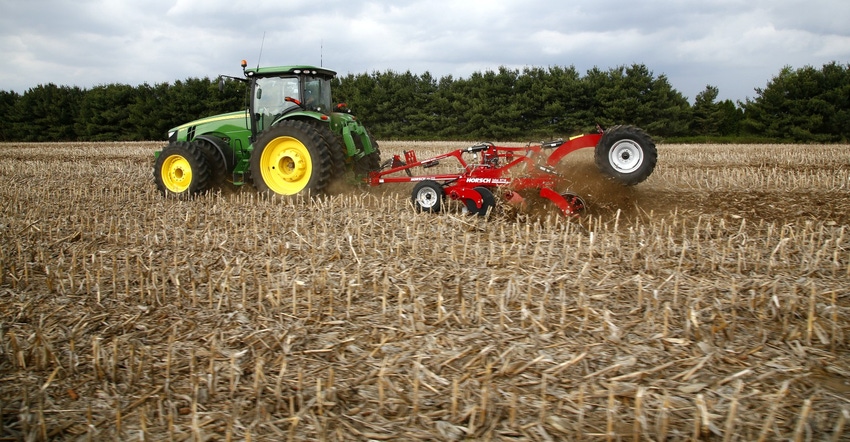September 17, 2020

Managing crop residue this fall is a challenge given the greater volume of residue from downed corn due to high wind and drought. There’s a tendency to think of tillage as the first option in managing a high volume of crop residue. But tillage needs to be used with careful consideration.
“The impact of residue incorporation with tillage on soil health and water quality is significant,” says Mahdi Al-Kaisi, Iowa State University agronomist specializing in soil and water management.
Long-term tillage and crop rotation studies for the past 16 years show the input cost associated with conventional tillage is in the range of $30 per acre. In addition to the economic input cost of tillage, the combination of tillage and residue removal in excess of 50% of after-harvest residue can cause significant soil health damage. That includes increased soil erosion, a reduction in water infiltration, a decrease in soil organic matter and destruction of soil structure.
To reduce the economic and environmental impact when managing crop residue, Al-Kaisi suggests four key considerations:
1. Evaluate residue. Evaluate how much residue you have on the field. That helps determine what kind of equipment and methods you need to use to manage the residue. If you have a large amount, tillage may not be a very good option given the challenges of incorporating a large amount into the soil. Residue removal or baling can offer a better option. Generally, removing 50% of the residue can provide better soil working conditions, yet will leave enough residue to protect soil from potential erosion. Read Managing crop residue removal and soil quality changes.
2. Consider field layout and soil type. There are many factors that need to be considered when selecting a management practice for residue, such as type of tillage system to use, for any given field or region in Iowa. One of the factors is soil conditions, including soil slope, drainage, topsoil depth or A-horizon depth, soil texture, highly erodible soil, etc. Read Management practices considerations.
Evaluating these factors will dictate if conventional tillage is a good choice or if using alternative methods such as baling some of the residue would be more suitable. Leave at least 50% of the residue, depending on the actual amount on the ground, to protect soil from potential erosion.
3. Avoid shredding residue. You can leave residue standing, such as cornstalks, and avoid shredding it. Residue can play a significant role in protecting soil from potential water erosion, especially during the off-season. Keeping residue upright has significant benefits in trapping snow and slowing down water movement off the field. This provides more opportunity for water to penetrate deeper in the soil profile.
It’s important to recharge the soil profile, especially after the drought Iowa experienced in 2020. Shredding and chopping residue will reduce its value and it becomes a management challenge, where residue will be washed off the field, reducing its value in protecting soil.
4. Switch to conservation tillage. Out of a bad situation, something good and new can evolve. The mindset of using tillage as an answer to any soil and production challenge needs to be reconsidered.
Research in Iowa the past 16 years shows the use of conventional tillage agronomically and economically is less superior to conservation systems such as no-till and strip-till. On average, conventional tillage input cost over no-till and strip-till is about $30 per acre. Also, research shows corn yields, after five to seven years of three conventional tillage systems, strip-till and no-till, were the same. The research also documented that soybean yield, with all those tillage systems, showed no significant difference.
“This year’s situation is an opportunity for farmers to rethink and evaluate their practices given current grain prices on top of production challenges,” Al-Kaisi says.
About the Author(s)
You May Also Like






